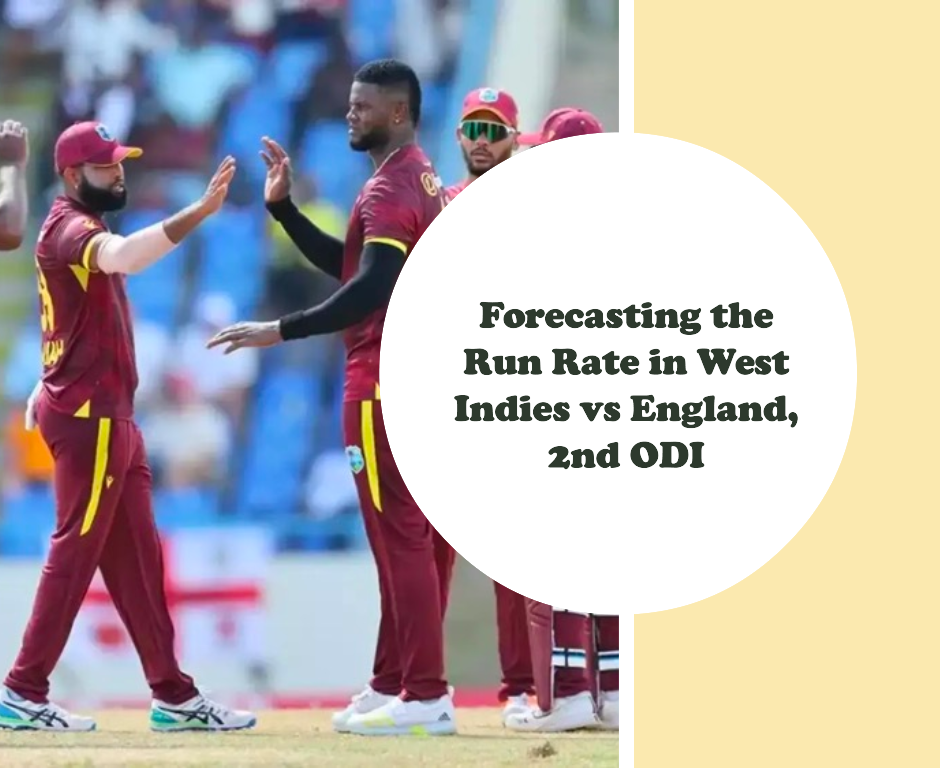
Introduction
Cricket, often referred to as a game of glorious uncertainties, is marked by the ebb and flow of runs on the scoreboard. As West Indies and England gear up for the 2nd ODI in the England tour of West Indies 2023, the spotlight turns to the art of pacing the innings. In this analysis, we explore the factors that might influence the run rate and contribute to the narrative of this intriguing encounter at the Sir Vivian Richards Stadium in North Sound, Antigua, scheduled for December 6.
Setting the Stage
Sir Vivian Richards Stadium: A Canvas for Run Rate Dynamics
The Sir Vivian Richards Stadium, with its lush outfield and variable pitch conditions, provides a dynamic canvas for batsmen to exhibit their shot-making skills. As teams navigate through the innings, understanding the nuances of run rate dynamics becomes paramount.
West Indies: Unleashing Caribbean Flair
Shai Hope (c & wk): The Anchoring Force
Shai Hope, leading the side as captain and also donning the wicketkeeper’s gloves, assumes a dual role. His ability to anchor the innings and set the tempo will be instrumental in determining West Indies’ run rate.
Shimron Hetmyer: The Powerhouse in the Middle
Shimron Hetmyer’s aggressive style makes him a powerhouse in the middle order. His capacity to accelerate the run rate and inject momentum into the innings places him at the center of West Indies’ run-scoring strategy.
Alzarri Joseph: Tail-End Firepower
Alzarri Joseph, known for his explosive batting in the lower order, adds a dimension of tail-end firepower. His ability to contribute quick runs towards the end of the innings can significantly impact West Indies’ run rate.
England: Crafting a Balanced Approach
Jos Buttler (c & wk): Captaincy and Run Accumulation
Jos Buttler, England’s captain and wicketkeeper, shoulders the responsibility of setting the tone with the bat. His aggressive approach and ability to accumulate runs quickly can shape England’s run rate strategy.
Liam Livingstone: The Aggressive All-Rounder
Liam Livingstone’s dual role as a power-hitting batsman and off-spin bowler provides England with a versatile asset. His aggressive batting style can propel the run rate, especially during the middle overs.
Sam Curran: Late-Innings Impetus
Sam Curran’s prowess as a dynamic all-rounder makes him a valuable asset towards the end of the innings. His ability to score quick runs and provide late-innings impetus contributes to England’s run rate ambitions.
Factors Influencing Run Rate
Powerplay Dominance: The Impact of Field Restrictions
The first ten overs, marked by fielding restrictions, often set the tone for the innings. Aggressive stroke-play during the powerplay can propel the run rate, providing the batting side with early momentum.
Spin Dynamics: Middle Overs Cruciality
As the innings progresses, the introduction of spin bowlers during the middle overs becomes pivotal. Batsmen’s ability to negotiate spin and find gaps in the field influences the run rate trajectory.
Death Overs Mastery: Tail-End Contributions
The final overs, commonly known as the death overs, witness a flurry of boundaries and calculated risks. Tail-enders with the ability to contribute quick runs play a decisive role in boosting the team’s run rate.
Conclusion
The West Indies vs England, 2nd ODI, promises to be a spectacle not only for cricket enthusiasts but also for those fascinated by the strategic intricacies of the game. Pacing the innings effectively, understanding the optimal moments for acceleration, and capitalizing on the strengths of key players will be crucial in determining the run rate dynamics.